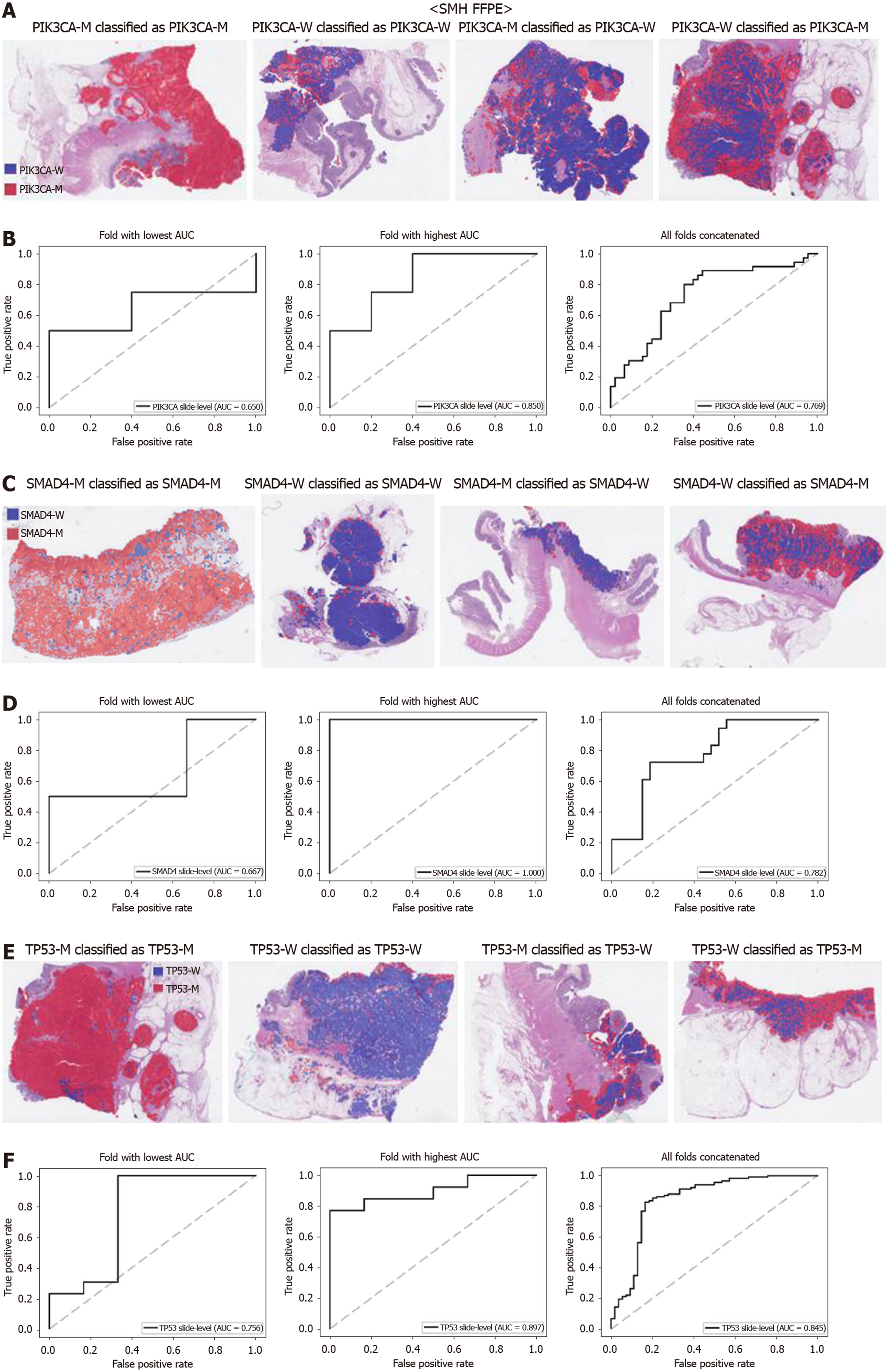Copyright
©The Author(s) 2020.
World J Gastroenterol. Oct 28, 2020; 26(40): 6207-6223
Published online Oct 28, 2020. doi: 10.3748/wjg.v26.i40.6207
Published online Oct 28, 2020. doi: 10.3748/wjg.v26.i40.6207
Figure 8 Mutation prediction of PIK3CA, SMAD4, and TP53 genes for the Seoul St.
Mary Hospital colorectal cancer tissue slides by the classifiers trained with both The Cancer Genome Atlas and Seoul St. Mary Hospital data. A: Representative whole slide images of the slides with PIK3CA gene mutation correctly classified as mutation, with wild-type gene correctly classified as wild-type, with gene mutation falsely classified as wild-type, and with wild-type gene falsely classified as mutation, from left to right; B: Receiver operating characteristic curves for the fold with lowest area under the curve (AUC), for the fold with highest AUC, and for the concatenated results of all ten folds, from left to right; C and D: Same as A and B, but the results were for the SMAD4 gene; E and F: Same as A and B, but the results were for the TP53 gene. PIK3CA-M: PIK3CA mutated; PIK3CA-W: PIK3CA wild-type; SMAD4-M: SMAD4 mutated; SMAD4-W: SMAD4 wild-type; TP53-M: TP53 mutated; TP53-W: TP53 wild-type; AUC: Area under the curve; FFPE: Formalin-fixed paraffin-embedded.
- Citation: Jang HJ, Lee A, Kang J, Song IH, Lee SH. Prediction of clinically actionable genetic alterations from colorectal cancer histopathology images using deep learning. World J Gastroenterol 2020; 26(40): 6207-6223
- URL: https://www.wjgnet.com/1007-9327/full/v26/i40/6207.htm
- DOI: https://dx.doi.org/10.3748/wjg.v26.i40.6207









